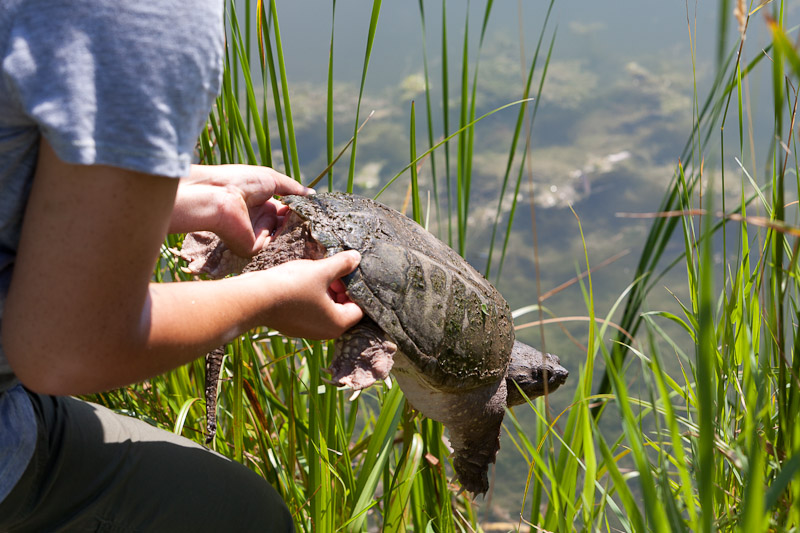How to contain a snapping turtle
Snapping turtles are not naturally aggressive, but they will defend themselves (by snapping!) if threatened. The safest way to contain them is the “spider method”: place the container right over the turtle, and slide a piece of wood, plastic, or cardboard underneath.
If you have to pick the turtle up, remember that they can snap about 1/2-way back across their shell. Avoid the front 2/3 of the turtle. There are a few ways to do this:
- Pick the turtle up by grasping the back of its shell just above its hind legs (see sidebar photo). DON’T use this method with turtles who have a broken or cracked shell.
- Use the “pizza hold”: slide one hand under the turtle (they can’t snap under their body), and grasp the base of the tail with the other hand. NEVER pick up a snapping turtle — or any other animal — by the tail.
Once the turtle is contained, put it in a dark, quiet place (a closet or bathroom is perfect!) and contact a wildlife rehabilitator. Reptiles and amphibians should be kept at room temperature while waiting for help.


